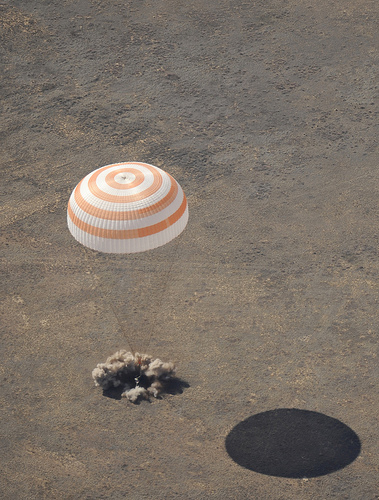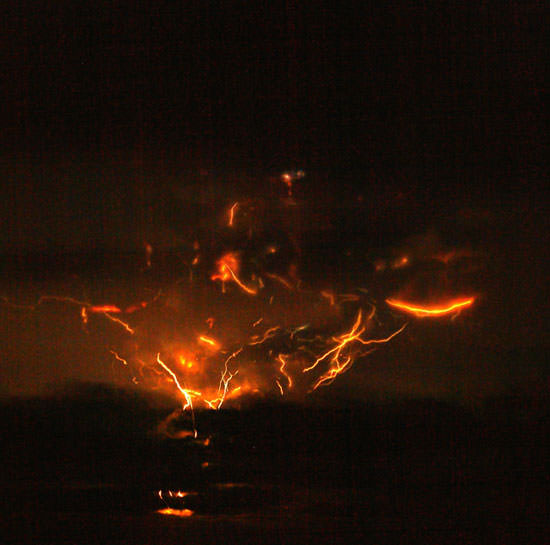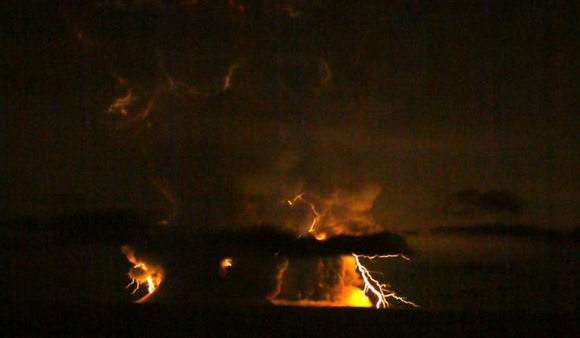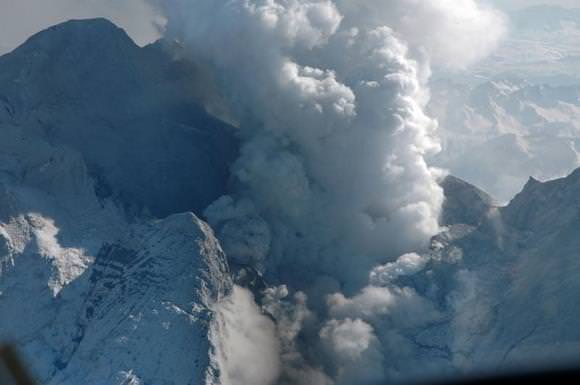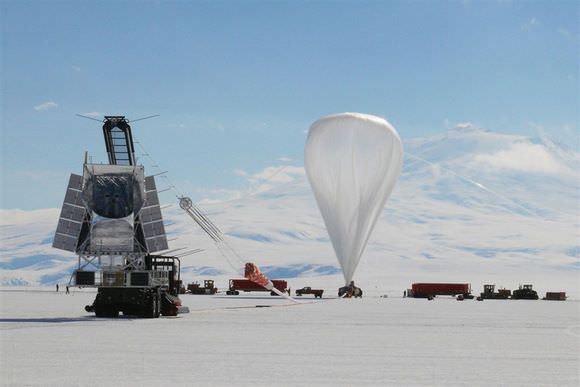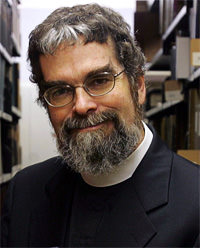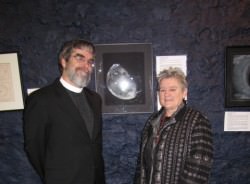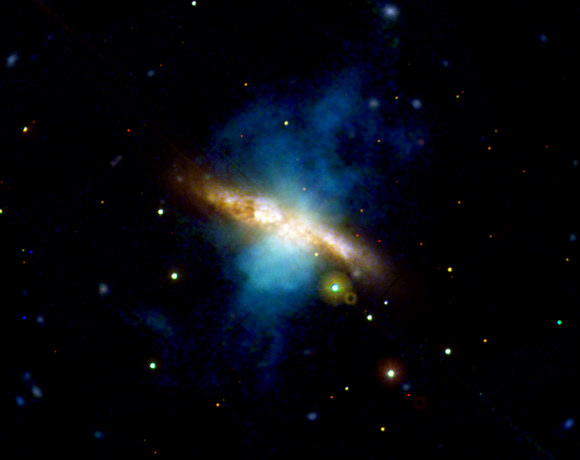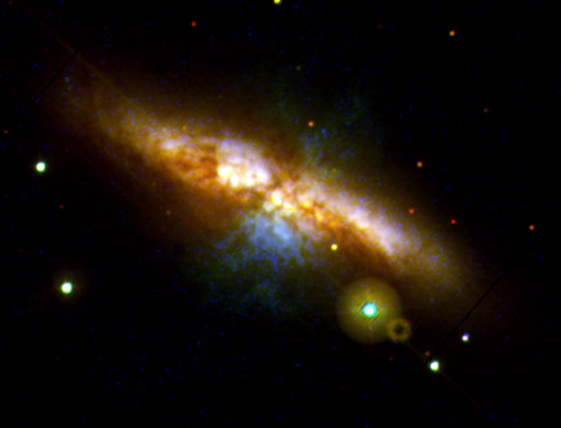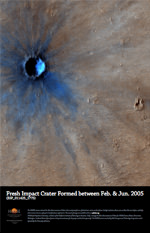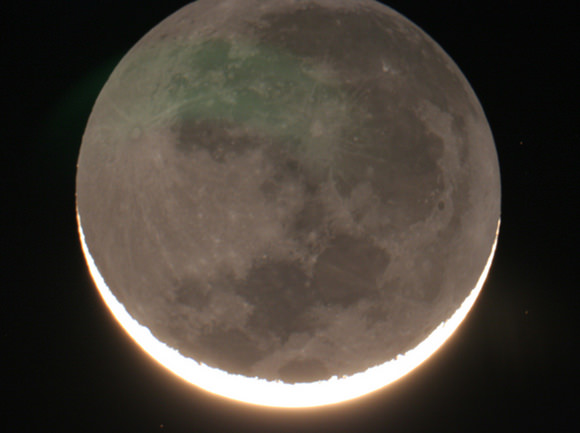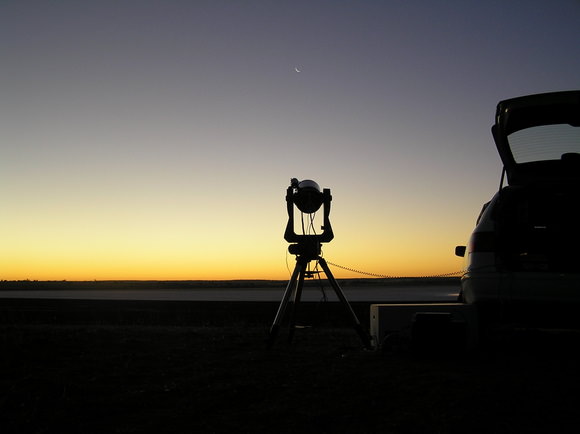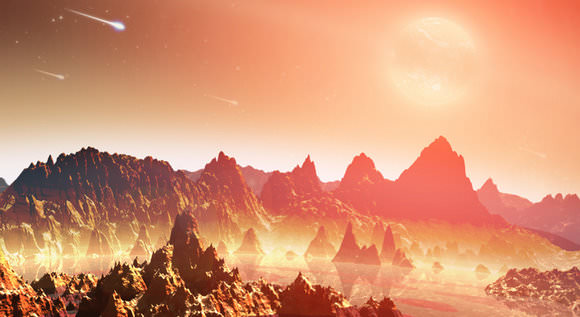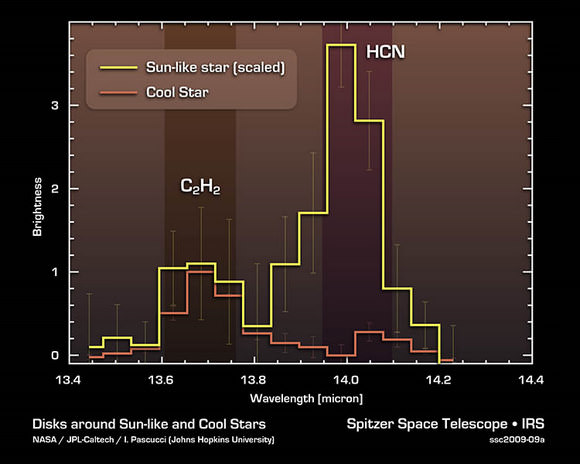[/caption]
Scientists have found a way to look past Earth’s atmosphere — and ancient cosmic dust — to glimpse galaxies that were formed in the first 5 billion years of the Universe.
A new study, released today in the journal Nature, reveals first-ever news from star-forming regions both near and far — including some from the edges of the Universe, which are racing away from us the fastest because of the Universe’s expansion.
The findings also clear up the sources of the Far Infrared Background, long shrouded in mystery.
The discoveries hail from the Balloon-borne Large Aperture Submillimetre Telescope (BLAST), which floated 120,000 feet (36,576 meters) above Antarctica in 2006.
The BLAST team chose to map a particular region of the sky called the Great Observatories Origins Deep Survey–South (GOODS-South), which was studied at other wavelengths by NASA’s three “great observatories” — the Hubble, Spitzer, and Chandra space telescopes. In one epic 11-day balloon flight, BLAST found more than 10 times the total number of submillimeter starburst galaxies detected in a decade of ground-based observations.
“We measured everything, from thousands of small clouds in our own galaxy undergoing star formation to galaxies in the Universe when it was only a quarter of its present age,” said lead author Mark Devlin, from the University of Pennsylvania.
In the 1980s and 1990s, certain galaxies called Ultraluminous InfraRed Galaxies were found to be birthing hundreds of times more stars than our own local galaxies. These “starburst” galaxies, 7-10 billion light years away, were thought to make up the Far Infrared Background discovered by the COBE satellite. Since the initial measurement of this background radiation, higher-resolution experiments have tried to detect the individual galaxies that comprise it.
The BLAST study combines telescope survey measurements at wavelengths below 1 millimeter with data at much shorter infrared wavelengths from the Spitzer Space Telescope. The results confirm that all the Far Infrared Background comes from individual distant galaxies, essentially solving a decade-old question of the radiation’s origin.
Star formation takes place in clouds composed of hydrogen gas and a small amount of dust. The dust absorbs the starlight from young, hot stars, heating the clouds to roughly 30 degrees above absolute zero (or 30 Kelvin). The light is re-emitted at much longer infrared and submillimeter wavelengths.
Thus, as much as 50 percent of the Universe’s light energy is infrared light from young, forming galaxies. In fact, there is as much energy in the Far Infrared Background as there is in the total optical light emitted by stars and galaxies in the Universe. Familiar optical images of the night sky are missing half of the picture describing the cosmic history of star formation, the authors say.
“BLAST has given us a new view of the Universe,” said Barth Netterfield of the University of Toronto, the Canadian principal investigator for BLAST, “enabling the BLAST team to make discoveries in topics ranging from the formation of stars to the evolution of distant Galaxies.”
In an accompanying News & Views piece, author Ian Smail, a computational cosmologist from Durham University in the UK, wrote that “the implication of these observations is that the active growth phase of most galaxies that are seen today is well behind them — they are declining into their equivalent of middle age.”
He also pointed out that studies of these extreme star-forming events in the early Universe will be aided by three major advances due over the next year or so: the submillimeter camera on the ESA/NASA Herschel Space Observatory; the development of large-format detectors working at submillimeter wavelengths, including one mounted on the James Clerk Maxwell Telescope; and the first phase of the Atacama Large Millimeter Array (ALMA).
“Such observations will allow astronomers to study the distribution of gas and star formation within these early galaxies,” Smail wrote, “which in turn will help to identify the physical process that triggers these ultraluminous bursts of star formation and their role in the formation of the galaxies we see in the Universe today.”
LEAD IMAGE CAPTION: The BLAST telescope just before launch in Antarctica. BLAST is in the foreground, next the 28 million cubic foot balloon, in the background is the volcano Mount Erebus. Credit: Mark Halpern
Source: Nature and a University of Pennsylvania press release (not yet online). Images, photographs, sky maps and the complete study are available at the BLAST Web site.

